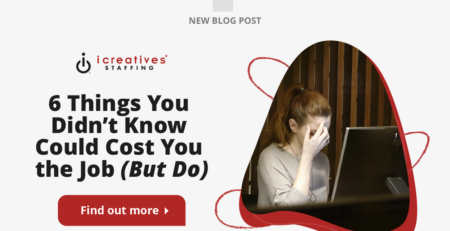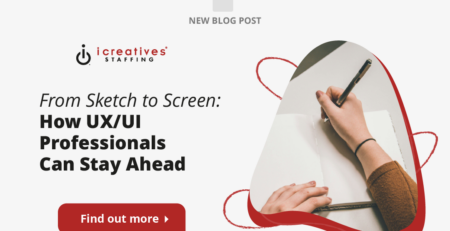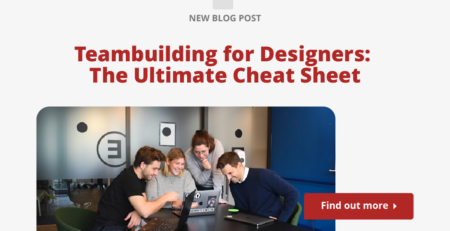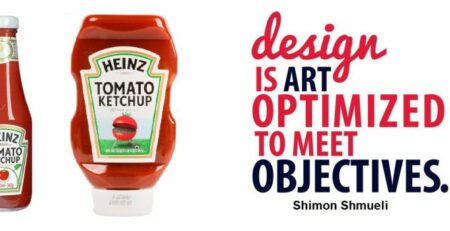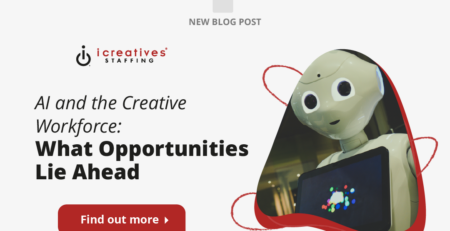Visualize Success: Tips for Recruiting Visualization Experts
In today’s data-driven world, the ability to visualize complex information effectively is more crucial than ever. Companies across various sectors are increasingly seeking talented visualization experts who can transform raw data into clear, insightful visual representations that drive decision-making and innovation. Recruiting the right talent in this specialized field requires a strategic approach, tailored to attract, evaluate, and retain top-notch professionals who can truly bring data to life.
The demand for visualization experts, such as data visualizers, graphic designers, and UI/UX designers, has surged as businesses recognize the value of data storytelling in making strategic decisions. These professionals possess a unique blend of skills, combining technical proficiency with artistic creativity to develop compelling visuals that narrate the hidden stories within data.
However, the recruitment process for such talent can be challenging. It involves not only identifying candidates with the right technical skills and creative flair but also those who fit well within your company’s culture and contribute to long-term objectives. This guide provides essential tips and insights into the recruitment process, helping you secure the right visualization talent to elevate your organization’s data presentation and decision-making processes.
Understanding the specific needs of your organization is the first step in recruiting visualization experts. It’s crucial to define what kind of visualizations are most beneficial for your business, whether they are interactive dashboards, static reports, or sophisticated infographics. This clarity helps in crafting precise job descriptions and in targeting the right talent pools.
Once the needs are defined, the next step is to look for candidates in the right places. Traditional job postings might not be enough. Exploring specialized online forums, professional networks like LinkedIn, and industry conferences can help tap into a pool of qualified candidates who are passionate about data visualization.
Assessing a candidate’s technical skills through practical tests is another critical aspect of the recruitment process. However, it’s equally important to evaluate their conceptual understanding of how visualization can be used to solve business problems. This dual approach ensures that the candidates are not only skilled in using tools but are also capable of thinking critically about the purposes and contexts of their visualizations.
Interviews should be structured to gain insights into the candidate’s experience and approach to design challenges. Discussing past projects can provide a deeper understanding of their capabilities and style, ensuring alignment with your project needs and company culture. Additionally, involving your current visualization team in the recruitment process can provide valuable perspectives and aid in assessing the candidate’s fit within the team.
Once you have identified the right candidates, offering a competitive package and a clear career path is essential to attract and retain top talent. Visualization experts seek opportunities where they can grow and have an impact. Highlighting the potential for professional development and the importance of their role in your organization can make your offer more appealing.
Lastly, fostering a culture that values and understands the importance of good data visualization is crucial. Continuous training and development opportunities should be provided to keep your team updated with the latest trends and tools in the industry. This not only enhances their skills but also keeps them motivated and engaged.
Most Asked Questions About Recruiting Visualization Experts
- What are the key skills to look for in a visualization expert?
- How can I assess the technical and creative abilities of potential candidates?
- What are the best platforms for finding visualization talent?
- How do I tailor the interview process to better evaluate visualization experts?
- What strategies can be used to attract top visualization talent to my organization?
- How should I structure the job offer to make it appealing to visualization professionals?
- What are effective ways to integrate a new visualization expert into my existing team?
What are the key skills to look for in a visualization expert?
When recruiting a visualization expert, it’s crucial to look for a blend of technical and soft skills that will enable them to perform effectively in their role. Technical skills should include proficiency in visualization tools like Tableau, PowerBI, or Adobe Creative Suite, as well as a strong understanding of data analytics and statistics. Soft skills are equally important, including critical thinking, creativity, and the ability to communicate complex information clearly and effectively. A successful visualization expert should also demonstrate keen attention to detail and a strong aesthetic sense to create engaging and informative visual representations of data.
Experience is another critical factor. Candidates who have a portfolio that showcases a wide range of projects across different industries and media types can offer valuable insights and versatility to your projects. Furthermore, the ability to work collaboratively within multidisciplinary teams is essential, as data visualization often involves inputs from various departments, including IT, marketing, and business analytics.
It’s also beneficial to consider candidates who are proactive in learning and adopting new technologies and methodologies in the field of data visualization. This not only ensures that your team remains at the cutting edge but also reflects a candidate’s passion and dedication to their craft.
During the recruitment process, consider setting practical tasks that reflect real challenges they might face in the role. This can help you assess not only their technical skills but also their problem-solving abilities and innovation. For instance, asking candidates to critique a poorly designed infographic or to redesign it based on specific criteria can provide deep insights into their expertise and thought process.
Lastly, cultural fit is an often overlooked but essential aspect of recruiting a visualization expert. They should align with your company’s values and culture, as this greatly influences their ability to collaborate effectively with other team members and contribute positively to the workplace environment.
How can I assess the technical and creative abilities of potential candidates?
Assessing the technical and creative abilities of potential visualization experts is a multifaceted process that should be approached strategically to ensure you identify candidates who not only have the right skills but can also apply them effectively in your specific business context. Start by reviewing their portfolios thoroughly to gauge their experience and the quality of their work. Look for diversity in their projects and the ability to use different visualization techniques and tools proficiently.
Technical assessments can also be conducted through standardized testing or practical assignments. For instance, providing candidates with a dataset and asking them to create a visualization that tells a compelling story can reveal their technical proficiency as well as their ability to derive meaningful insights from data.
Creative abilities, on the other hand, can be evaluated by discussing the thought process behind their portfolio projects. Ask candidates to explain their design choices, the challenges they faced, and how they overcame them. This not only sheds light on their creative thinking but also their problem-solving skills.
Another effective method is to conduct a workshop or a collaborative project during the final stages of the interview process. This allows you to observe how candidates interact with team members, their approach to feedback, and their ability to iterate on their designs in a real-world collaborative setting.
It’s also advisable to ask situational questions that can help you understand how candidates would react in specific scenarios relevant to your business. For example, asking how they would handle a situation where there is a conflict between data insights and design aesthetics can provide insights into their ability to balance creativity with practicality.
Finally, consider using peer reviews as part of the assessment process. Inviting your current visualization team to review the candidates’ work can provide additional perspectives on their technical and creative skills, as well as how well they might integrate into your existing team.
What are the best platforms for finding visualization talent?
Finding the right platforms to source visualization talent can significantly streamline the recruitment process. Professional networks like LinkedIn are invaluable for reaching out to professionals with established careers in data visualization. Additionally, niche job boards that cater specifically to creatives, such as Behance or Dribbble, can be excellent resources for discovering up-and-coming talent with fresh, innovative ideas.
Engaging with online communities and forums that focus on data visualization, such as the Data Visualization Society or specific groups on Reddit, can also help you connect with professionals who are not only skilled but are also passionate about their field. These platforms often host discussions and challenges that can showcase the abilities and creativity of potential candidates.
Another effective approach is to tap into academic institutions that offer courses in data science, statistics, graphic design, or similar fields. Collaborating with universities can help you identify promising new graduates who are eager to apply their cutting-edge knowledge and skills in a professional setting.
Attending industry conferences and workshops can also be a great way to meet visualization experts who are leaders in their field. These events provide opportunities for networking and one-on-one interactions with professionals who might be looking for new opportunities or can refer you to potential candidates.
Lastly, don’t underestimate the power of social media platforms like Twitter and Instagram, where many artists and designers showcase their work. These platforms can provide a more informal way to approach potential candidates and get a sense of their style and personality before the formal recruitment process begins.
How do I tailor the interview process to better evaluate visualization experts?
Tailoring the interview process to better evaluate visualization experts involves a combination of structured interviews, practical assessments, and behavioral questions that together provide a comprehensive view of the candidate’s abilities, thinking processes, and fit within your team. Start with a detailed review of their portfolio to set the stage for discussing specific projects during the interview. This allows candidates to demonstrate their problem-solving skills and creativity.
Include practical tasks that mimic real job challenges. For example, give candidates a raw dataset and a brief outline of what insights you need to extract. This task can reveal not only their technical skills but also how they approach data storytelling.
Behavioral questions can help you understand how candidates have handled past work situations and challenges. Questions like “Can you describe a project where you had to make significant changes based on feedback?” or “How do you handle tight deadlines and multiple projects?” are valuable in assessing their soft skills and adaptability.
It’s also beneficial to involve other team members in the interview process. They can provide different perspectives on the candidate’s technical skills and cultural fit. This can be particularly important in roles that require collaborative work across different departments.
Consider also the use of remote interviewing technologies, especially when recruiting from a global talent pool. Platforms that support video interviews can help you connect with candidates from various geographical locations, ensuring that you don’t miss out on top talent due to logistical constraints.
Finally, always provide candidates with feedback after the interview process. This not only helps them improve but also enhances your company’s reputation in the job market, making it more attractive to future candidates.
What strategies can be used to attract top visualization talent to my organization?
To attract top visualization talent, organizations need to position themselves as ideal places for creative and technical growth. Start by highlighting the innovative projects your company is involved in and the impact your team has on the company’s success. Showcasing the technologies and methodologies you use can also attract candidates who are eager to work with cutting-edge tools and processes.
Offering competitive salaries and benefits is crucial, but don’t overlook the importance of a positive work culture and opportunities for professional development. Many visualization experts value continuous learning and growth. Providing access to training programs, conferences, and seminars can make your organization more appealing.
Flexibility is another key factor that many professionals look for in a workplace. Offering remote work options or flexible hours can make your organization attractive to a wider range of candidates, including those who may not be in the immediate geographical area but who possess exceptional skills.
Engage actively with the data visualization community by sponsoring events, hosting meetups, or participating in industry discussions. This not only increases your visibility as an employer of choice but also helps you build relationships with potential candidates over time.
Lastly, ensure that your job postings are clear, inclusive, and highlight the essential requirements and responsibilities. Use language that resonates with creative professionals and avoid jargon that might be ambiguous or off-putting. Clearly articulating the potential for impact within the role can also be a significant draw for top talent.

How should I structure the job offer to make it appealing to visualization professionals?
Structuring an appealing job offer for visualization professionals involves more than just a competitive salary. It should comprehensively address various aspects of the job and the benefits that come with it. Start by offering a competitive base salary that matches or exceeds industry standards, which you can find out more about through resources like the icreatives salary guide.
Include a detailed description of the role, highlighting how it contributes to the organization’s goals and its importance to the team. This helps candidates see the value and impact of their work.
Benefits should also be tailored to meet the needs of creative professionals. This could include health insurance, retirement plans, and bonuses, but also access to professional development programs, subscriptions to industry-relevant software, and opportunities to attend workshops and conferences.
Work-life balance is increasingly important to professionals in all fields, including visualization. Offering flexible working hours, the option for remote work, and generous leave policies can make your offer more attractive.
Lastly, emphasize the collaborative nature of the role and the opportunity to work with a team of skilled professionals. This can be particularly appealing to candidates who value community and teamwork.
What are effective ways to integrate a new visualization expert into my existing team?
Integrating a new visualization expert into your team effectively requires a structured onboarding process that not only familiarizes them with their new role but also integrates them into the company culture. Start with a comprehensive orientation program that covers everything from company policies to project management tools and internal processes.
Assign a mentor or a buddy from the existing team who can help the new hire navigate the early days in the organization. This can facilitate a smoother transition and provide them with a go-to person for any questions or concerns they might have.
It’s also important to involve the new hire in real projects as soon as possible. This helps them feel valued and gives them a sense of contribution right from the start. However, make sure to balance this with a reasonable workload and provide support as they learn the ropes.
Regular check-ins during the first few months can help address any issues early on. This can be through formal meetings or informal catch-ups. Feedback during these sessions should be constructive, focusing on both areas for improvement and recognizing achievements.
Lastly, encourage a team culture that values open communication, collaboration, and continuous learning. This can help new hires integrate more quickly and feel part of the team, enhancing both their performance and job satisfaction.
Conclusion
Recruiting the right visualization expert is crucial for businesses looking to enhance their data interpretation and decision-making capabilities. By understanding the specific skills required, effectively assessing candidates, and creating an attractive work environment, organizations can attract and retain top talent. The strategies outlined in this guide provide a comprehensive approach to recruiting visualization professionals, ensuring that your team has the skills and creativity needed to succeed in a competitive market.
Remember, the key to successful recruitment lies in a balanced approach that considers both technical abilities and cultural fit. By fostering an environment that values innovation, continuous learning, and collaboration, you can build a team of visualization experts who are not only skilled but also motivated and committed to achieving your company’s goals.
As the demand for skilled visualization professionals continues to grow, staying informed about the latest trends and best practices in recruitment can help you maintain an edge in the job market. Keep engaging with the community, refining your recruitment strategies, and investing in your team’s growth to ensure ongoing success and innovation in your projects.
For more insights into managing and growing your creative team, consider exploring additional resources such as managing a remote workforce and using a staffing agency. These can provide you with further guidance on creating a thriving work environment for your visualization experts.
In conclusion, the journey to finding and integrating top visualization talent into your team can be complex, but with the right approach, it is immensely rewarding. By focusing on the needs of your projects and the aspirations of your candidates, you can build a powerful team that drives innovation and success in your organization.
In today’s competitive market, finding the right creative and marketing expert can be a challenge. But with icreatives, you’re in experienced hands. With 37 years in staffing and a track record of matching more than 10,000 employees to over 1,000 companies worldwide, we know how to connect you with the best. Plus, you only pay if you hire—there’s no risk, only results.
Ready to find your perfect creative or marketing expert? HIRE WITH ICREATIVES today!



